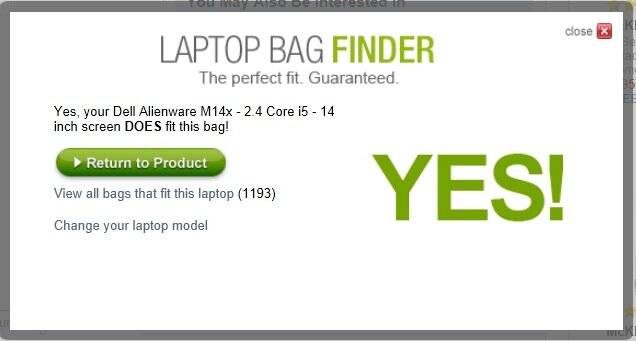Webinar preview: content to compete with Amazon
March 11, 2013
As discussed in our 2013 trends webinar, the top priority for merchants this year is brand differentiation. The competition for consumers’ dollars is fierce, with top mega-brands attracting the lion’s share of revenues on one end of the spectrum even as the field of small- and mid-sized merchants becomes ever more crowded.
This polarization is so marked that we thought it worthwhile to take a look at the biggest of the big sellers — Amazon.com — and to examine how merchants can successfully position themselves and compete. Amazon’s playbook is certainly worth studying, based on the site’s success: in the past five years, U.S. eCommerce sales grew an average of 14% annually, while , at an average of 36% per year, according to industry researcher Forrester.
Small- to -mid-sized merchants can gain brand exposure by participating in Amazon’s network of Marketplace sellers, but ultimately, they want to establish a direct relationship with consumers. That’s a difficult proposition when Amazon’s economies of scale enable it to offer the most efficient shipping — and a low free shipping threshold — along with discount prices on nearly every item.
But there’s evidence that consumers recognize value beyond pricing. When asked what factors influence their buying decisions, 77% of shoppers said they consider a brand’s reputation, 79% said they value a broad assortment of items, and 66% said a unique selection is important, according to the MarketLive Consumer Shopping Survey. These statistics suggest that merchants who can articulate their uniqueness as a brand — especially when compared with Amazon’s mega-warehouse identity — can not only survive, but thrive.
On Amazon, nearly everything under the sun is available – but all those items are presented and merchandised identically, without calling attention to unique product attributes or supporting the lifestyle of the potential buyer. In short, Amazon sells products; the rest of us have the opportunity to sell brand experiences.
A key component of creating a brand experience is content, which will be the focus of , the first in a series devoted to competing with Amazon. Previously, we’ve discussed how content can and connect them with consumers across touchpoints. As it turns out, the right combination of text, images, videos and user contributions can also create a wholly unique and irresistible value proposition, one that presents a viable alternative to Amazon.
The webinar will examine and explicitly compare Amazon and successful specialty merchants in four key areas for developing uniquely alluring content:
Unique product pages. Merchants can not only exceed the amount and depth of information presented on Amazon’s product pages, they can break free from the standard format to design and create content that caters to their specific audiences. For example, the specialty merchant eBags helps shoppers match their laptops with appropriately-sized backpacks and satchels — a specialized tool Amazon doesn’t offer.

User-generated content beyond ratings and reviews. At first glance, it seems like small- to mid-sized merchants can’t compete with Amazon when it comes to user-generated content, as Amazon’s massive audience almost guarantees that it will have the largest number of ratings and reviews. But sheer volume isn’t everything. Specialty merchants have the ability to go beyond reviews on the product page to tap a wide range of user-generated content that conveys brand identity – from social media contributions to customer service support. For example, the brand testimonials offered by fitness program creator Beachbody go beyond simple ratings and reviews or even the before-and-after pictures offered for their products on Amazon. Testimonials such as this one from Robert R., who describes gaining “happy weight” in the first years of his marriage, identify situations prospective buyers can identify with.

Deep value-added content. To create a truly superlative brand experience, merchants should supply still another category of content: authoritative value-added content that demonstrates the brand’s in-depth knowledge of the customer’s lifestyle. Buying guides with personality, behind-the-scenes content, expert advice and blogs all give merchants the opportunity to distinguish their brands. The founder of apparel brand Lilly Pulitzer originally ran a juice stand and made her first fashion creations with bold prints to cover up the juice stains; a section of the eCommerce site on the company’s history is presented with bold graphics in the same vivid colors as the company’s now-famous prints. The history serves to ground the brand in a personal story and add meaning to the products on offer.

Video. More than 50% of the nation’s population watched an online video in January of 2013, according to measurement firm comScore — but it’s a format that’s conspicuously absent from Amazon.com. Apart from scattered video reviews submitted by customers and a handful of online video tutorials for its own branded Kindle e-reader products, Amazon has no video content to speak of. This lack presents a huge opportunity for other merchants to provide shoppers with a compelling brand experience they can find nowhere else. By developing video content to support products and lifesyle, and encouraging consumers to submit their own, merchants can win a definite advantage over Amazon.
Tune in to the webinar tomorrow at 10 a.m. PDT — and meantime, let us know: what content has proven compelling for your brand?
Pingback: Webinar recap: It’s not just the content — it’s what you do with it « Acquire, Convert & Retain « MarketLive Intelligent Commerce Blog